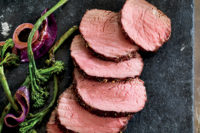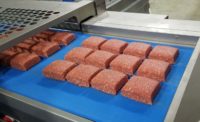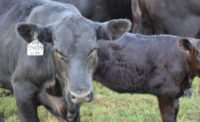I had the chance in September to attend the Certified Angus Beef Annual Conference in Asheville, N.C. The conference brings together all aspects of the beef industry, including producers, processors, retailers, foodservice operators and distributors. Along with the education seminars and the new products showcase, one of the real highlights was the welcoming reception, where chefs from across the country prepared a welcoming feast for attendees.
When it comes to the foodservice world, there are two separate types. On one hand, you have the restaurant chains, where menus are designed around uniformity. If you go to a Chili’s in California and one in Florida, the expectation is that the food would taste the same. At the other end of the spectrum, you have the individually owned restaurants, where the menu is left to the creativity of the chef. The meat industry depends on both of these types of restaurants, but the types of products they will offer could be very different indeed.
When it comes to these individual chefs, spectacle goes a long way. The CAB Conference reception put a big focus on fire. Open flames were the star of the show at each station, along with creative cooking methods and utensils. Shawn Heine of Prime Cincinnati, an renowned steakhouse, prepared strip steaks by skewering dozens at a time on a pitchfork and putting them in a deep fryer
Greg and Kristina Gaardbo, chefs at Chicago Culinary Kitchen, created a stir by introducing the scorpion cut steak — a butterflied tomahawk ribeye that leaves the rib bone sticking up in the air like a scorpion. While they left the scorpion at home for the CAB Conference, they did bring out a spinalis skewer — using swords as skewers.
Processors who service the restaurant industry should keep in mind that different accounts need different things. Chain restaurants need uniformity and affordable cuts. Independent chefs can have a wild creative streak and would be open to unique cuts and preparation ideas. If you’re servicing these small, independent restaurants, consider bringing them underutilized cuts, exotic species or interesting preparation ideas. They may leap at the opportunity to do something bold.





Report Abusive Comment